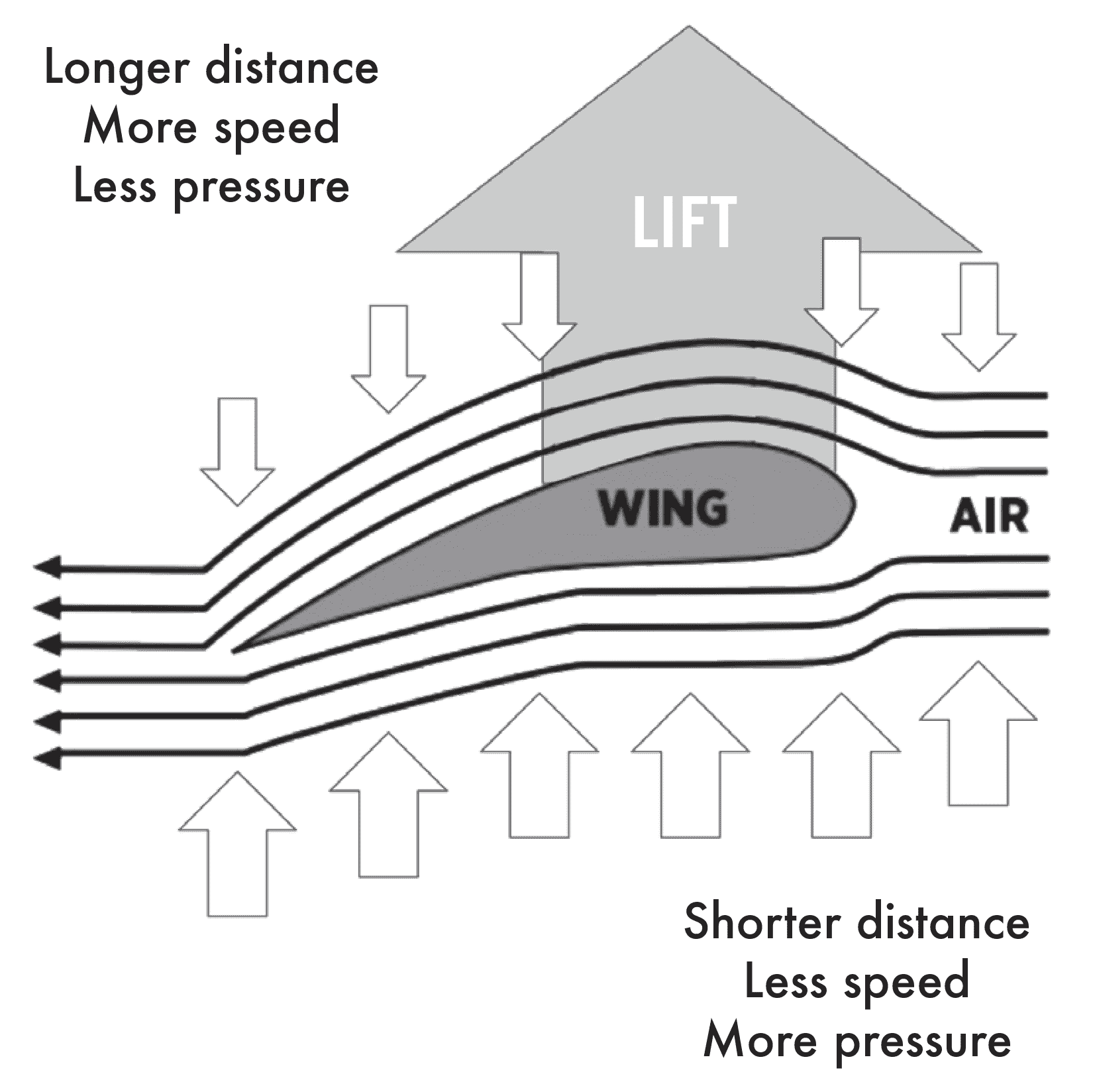Aerovane®
Designed in US Illinois, Aerovane is the first ever vane to employ (US Patent: 8,105,189) Airfoil Technology for archery arrows. Aerovane does not look like and does not work like traditional vanes; it is not flat but instead is shaped like and works like an airplane wing. Traditional vanes use drag to induce arrow rotation which fundamentally causes a huge loss in energy and speed Aerovane however, equipped our Airfoil Technology, not only induces or initiates arrow rotation, but also maintains it.
Aerovane also flies quieter than traditional vanes because Aerovane’s frontal curvature, the wing itself, takes heavily from an owl, the only bird on earth that can fly in complete silence. Fletched with Aerovane, your archery projectile will fly flatter, straighter, and more accurately and quietly.
You can shoot Aerovane with confidence.
When the first Aerovane (Aerovane I) was introduced in the spring of 2008, a lot about the connection between aerodynamics and arrow dynamics was not fully understood. For example, Aerovane‘s surface was designed as smooth as possible in an attempt to decrease frictional air drag. We soon discovered however, that a smooth surface does the opposite—it increases frictional air drag. In over our heads, we consulted the aerospace engineering expert, Dr. Michael Selig of the University of Illinois at Urbana-Champaign (UIUC). Afterward, Aerovane II was born. Follow along below to learn about the rest of the Aerovane features and their development timeline.
Slim Rectangular Pyramid
Before getting into texture, it’s important to mention the main design feature that did work in the Aerovane I: the pyramid. Aerovane has never been flat. Consider a normal piece of paper versus a paper airplane. While a piece of paper won’t go too far when you throw it, a paper plane’s wings will catch air and fly far. That is why Aerovane was and will always be a shaped like a pyramid instead of flat.
Aerovane, however, does not have sharp angles like a normal pyramid. It’s edges are curved to reduce sound. Specifically, its frontal curvature takes heavily from the owl, the only bird on earth that can fly in complete silence.
Regional Texture Zones
Under Professor’s Selig’s counsel, the Aerovane II and Aerovane III feature regional texture zones.

Examine the two sample surfaces above. If one had to step unto one of these surfaces, which would you choose? Most would select the bottom one because it has more points to distribute weight e.g. bed of nails. This, however, is not the correct answer in fluid dynamics.
Although air is not weightless, its weight is so insignificant it is negligible. Therefore, instead, because air cannot distribute its own weight, air creates cushions for itself on surfaces with rougher textures (rougher, at least, at a micro level). Via these Surface Boundary Layers, the texture zones actually help guide the air along.

Due to the curved, pyramid-like shape of the Aerovane, the path in which air passes over it is also curved. Air must run up and down the curve. But because air wants to take the shortest path possible, texturing brings the air towards the vane itself and overall minimizes turbulence. Notice the color-coded vanes on the other page. For Aerovane II, the roughest texture (yellow) is on the far right and continues to the smoothest (left, blue).
Aerovane III takes this farther. Via something called dynamic texturing, the zones are better segmented to optimize air flow and reduce any negative effects. Note too that the winglet, due to its close to perpendicular directionality against the air, has been given the roughest texture.
Drag Versus Circular Lift
Unlike every other vane on the market, Aerovane does not use drag. Flight fundamentally is a process of deceleration. This is due to drag. Without drag (and gravity, of course,) objects in flight would stay in flight forever. Drag, then, is an opposing force and it only increases as speed does, to the point that it wastes energy.
Aerovanes, however, use lift instead of drag. Specifically, they utilize Airfoils Technology to maintain energy throughout flight. By definition, airfoils are structures that’s shape takes advantage of something called Bernoulli’s Principle. Bernoulli’s Principle states that an increase of speed occurs simultaneously to a decrease of pressure. But what does that mean and why does it matter? Consider the next diagram.

There is air flowing over and under the structure named “wing.” Due to the wing’s shape, the air above must travel farther and therefore faster, exerting less pressure. The opposite is the case for the air below—it must travel a shorter distance and therefore can travel slower, but as a consequence exerts more pressure. This imbalance in pressure creates lift.
But that’s just one wing. For arrows, usually, there are three vanes and therefore, if Aerovane equipped, three wings. And together, the three separate lift forces create circular lift. Further, as an aftereffect of our reliance on circular lift instead of drag, the crosswind signature of an Aerovane equipped arrow is exponentially smaller than usual. High crosswinds have minimum effect on arrow trajectory
Reiterated, Aerovane [1] is not flat but curved and shaped like a slim rectangular pyramid, [2] is not smooth but features regional texture zones, and [3] is equipped with patented Airfoil Technology to take advantage of circular lift instead of drag. Fletched with Aerovane, your archery projectile will fly flatter, straighter, and more accurately as well as quietly.



